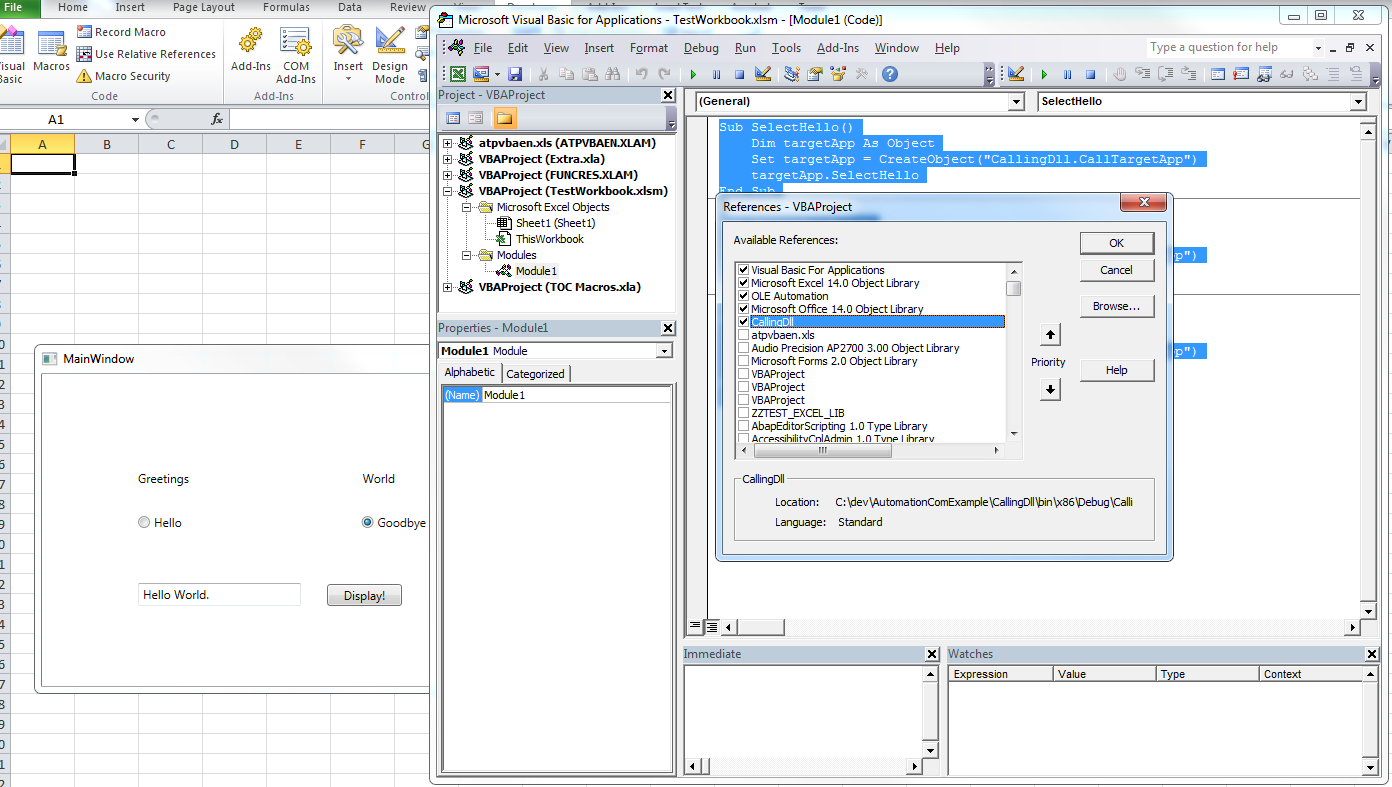Summary:
A minimum working example of how to tie a C# .NET GUI to a callable C# .NET class library dll from Excel VBA or another C# application.
This is a follow up to the non GUI example posted earlier
Project: AutomationComExample.zip
- 1 Summary:
- 2 Framework Structure
- 2.1 ExampleTargetApp (GUI Application)
- 2.1.1 MainWindow.xaml.cs
- 2.1.2 HelloWorldService.cs
- 2.2 ServiceDefinition
- 2.2.1 IHelloWorldService.cs
- 2.3 CallingDll
- 2.3.1 ServiceProxy.cs
- 2.3.2 ICallTargetApp.cs
- 2.3.3 CallTargetApp.cs
- 2.1 ExampleTargetApp (GUI Application)
- 3 Example access from VBA
Framework Structure
The goal is to connect the piping features of WCF named piping class with the GUI features of the MainWindow class. C# does not support multiple inheritance, but that is fine. We only need an interface and C# supports that of course. We can create an interface from the GUI that the DLL will utilize to allow changes to the GUI from another application.
The framework consists of three projects within visual studio: ExampleTargetApp, ServiceDefinition, and CallingDll.
- ExampleTargetApp contains the information for the GUI and handles what happens when elements of the GUI interact with the user, presumably via mouse and keyboard but could also be via function piping. This project also contains a service to make use of the pipes interface.
- ServiceDefinition contains an interface for the functions to go through WCF pipes.
- CallingDll uses the service interface to access functionality contained and defined in the ExampleTargetApp project
ExampleTargetApp (GUI Application)
MainWindow.xaml.cs
Contains the elements of the GUI such as Button1_Click() and SelectRadio1()
HelloWorldService.cs
Contains the service class using the service interface
ServiceDefinition
IHelloWorldService.cs
Contains the service interface definition
CallingDll
ServiceProxy.cs
Set up the service to work using the service contract defined in the ServiceDefinition project
ICallTargetApp.cs
Interface for calling DLL
CallTargetApp.cs
Functions for calling DLL through the proxy
Example access from VBA

Load the dll “CallingDll” by selecting browse then going to the project build directory: C:\dev\AutomationComExample\CallingDll\bin\x86\Debug\CallingDll.tlb

One thought on “How to tie a C# .NET GUI to a callable C# .NET class library dll from Excel VBA: Guided Minimum Framework Example”
Comments are closed.